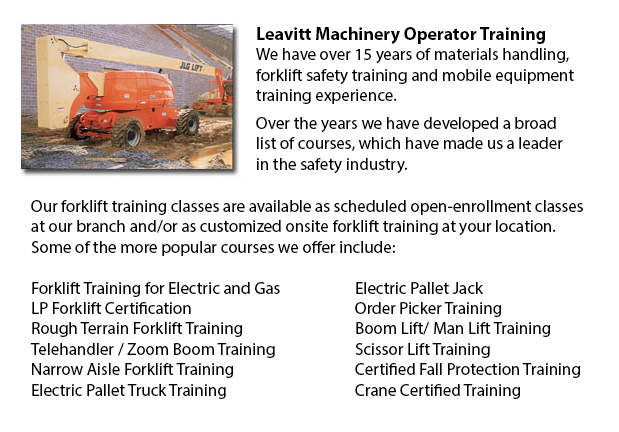
Boom Lift Safey Training Burlington - Boom lifts fall under the kind of elevated work platform or aerial lifting device. Most commonly used in industry, warehousing and construction; the boom lift is really versatile that it could be utilized in almost whatever environment.
The elevated work platform is utilized to enable access to heights that were otherwise unreachable using other means. There are risks inherent when using a boom lift device. Employees who operate them must be trained in the proper operating techniques. Preventing accidents is vital.
The safety aspects which are included in using boom lifts are included in our Boom Lift Training Programs. The course is best for individuals who operate self-propelled boom supported elevated work platforms and self-propelled elevated work platforms. Upon successful completion of the course, Individuals who participated would be given a certificate by a person who is authorized to confirm completing a hands-on evaluation.
Industry agencies, federal and local regulators, and lift manufacturers all play a part in providing information and establishing standards to be able to help train operators in the safe use of elevated work platforms. The most essential ways in avoiding accidents associated to the use of elevated work platforms are as follows: inspecting machines, having on safety gear and performing site assessment.
Important safety factors when operating Boom lifts:
Operators stay away from power line, observing the minimum safe approach distance (MSAD). Voltage could arc across the air to find an easy path to ground.
So as to maintain stability as the platform nears the ground, a telescopic boom should be retracted prior to lowering a work platform.
Boom lift workers must tie off to ensure their safety. The harness and lanyard tools should be connected to manufacturer provided anchorage, and never to other wires or poles. Tying off may or may not be necessary in scissor lifts, that depends on particular employer guidelines, job risks or local regulations.
Avoid working on a slope which goes beyond the maximum slope rating as specified by the manufacturer. If the slop goes beyond requirements, then the equipment must be winched or transported over the slope. A grade could be simply measured by laying a minimum 3-feet long straight edge or board on the slope. Then a carpenter's level can be laid on the straight edge and raising the end until it is level. The per-cent slope is obtained by measuring the distance to the ground (the rise) and then dividing the rise by the length of the straight edge. Afterward multiply by one hundred.
-
Order Picker Training Burlington
Order Picker Training Burlington - Order picker's enables warehouse employees to lift pallets using forks. Also called a stock picker, this particular electrically-powered equipment is similar to a forklift except that an order picker is likewise uti... More -
Crane Certification Burlington
Crane Certification Burlington - The Crane Certification training program includes content recommended by industry regarding the efficient and safe operation of cranes. Trainees would learn the following: how to identify cranes and their component pa... More -
Overhead Crane Training Burlington
Overhead Crane Training Burlington - The overhead crane is a piece of equipment which can lift and move huge, heavy objects which can't be handled by hands. Typically, overhead cranes are fixed in place. These equipment are capable of moving huge vol... More -
Aerial Lift / Boom Lift / Man Lift / Scissor Lift Training in Burlington
Lift tables or scissor lifts could elevate both people and goods vertically. They are normally used in construction, commercial and industrial environments. Commonly, the use of a scissor lift is to lift and lower supplies from one floor of a job loc... More -
Telehandler Operator Training Burlington
Telehandler Operator Training Burlington - Telescopic Handler forklifts or telehandler forklifts are usually found on construction places and their popularity continues to rise. The versatility of telehandler forklifts ensures that they are a valuabl... More -
Forklift Training Classes Burlington
Forklift Training Classes Burlington - Forklift are heavy pieces of industrial machines that are made use of in transporting and the handling of merchandise and materials. They are often known as Lift trucks and are found in all sorts of businesses.... More -
Boom Lift Training Burlington
Boom Lift Training Burlington - Aerial platforms or also known as elevated work platforms are devices that allow workers to perform tasks and duties at elevated heights that would not be otherwise accessible. There are a variety of aerial lifts avail... More -
Bucket Truck Training Burlington
Bucket Truck Training Burlington - The Vehicle-Mounted Aerial Work Platform or also called bucket truck training program is intended to decrease the risk of incident and personal injury while working in close proximity or with bucket trucks by effici... More

Forklift Training Burlington
TOLL FREE: 1-888-254-6157
Burlington, Ontario
forklifttrainingburlington.com
Email Us
About Us


